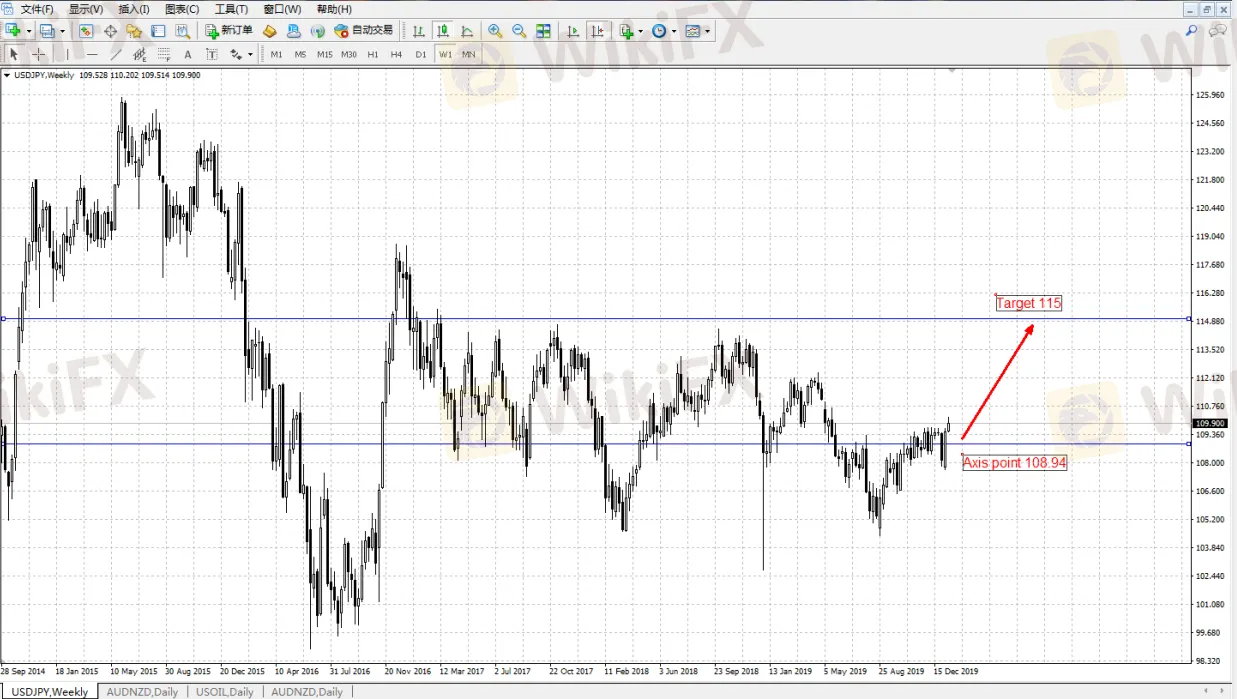简体中文
繁體中文
English
Pусский
日本語
ภาษาไทย
Tiếng Việt
Bahasa Indonesia
Español
हिन्दी
Filippiiniläinen
Français
Deutsch
Português
Türkçe
한국어
العربية
Arbitrage Involving JPY Has Become More Frequent
요약:The USD/JPY pivot point in the first half of 2020 will be at 108.94. If trade talks between the United States and China progress towards a positive direction, bringing more stability to the global economy, the yen may continue to move to 115 level.
History shows USD/JPYs annual fluctuation has remained under 10% for 3 years in a row, while the less than 8% fluctuation in 2019 has been a record low since 1980. When the market is “risk-on”, traders will usually actively conduct carry trade of the yen, when risk sentiment turns off, investors will be forced into short positions, selling high-yielding currencies while buying back the yen sold, which is why the yen strengthens in a risk-off environment.
But since sold off in the yen is rarely seen in recent years, the currencys appeal as a safe-haven has fallen sharply. If interest rates rise in other countries, resulting in a wider interest rate gap with Japan, this will encourage yen carry trades.
In terms of monetary policy, Japan's economy is in a moderate expansion, and the central bank will step up easing measures in face of upside risks. To meet its 2% inflation target, the Bank of Japan will maintain Quantitative and Qualitative Monetary Easing (QQE) through controlling its yield curve. The Bank of Japan will continue to expand its monetary base until consumer inflation stabilizes by more than 2%.
The USD/JPY pivot point in the first half of 2020 will be at 108.94. If trade talks between the United States and China progress towards a positive direction, bringing more stability to the global economy, the yen may continue to move to 115 level.

면책 성명:
본 기사의 견해는 저자의 개인적 견해일 뿐이며 본 플랫폼은 투자 권고를 하지 않습니다. 본 플랫폼은 기사 내 정보의 정확성, 완전성, 적시성을 보장하지 않으며, 개인의 기사 내 정보에 의한 손실에 대해 책임을 지지 않습니다.
WikiFX 브로커
최신 뉴스
WikiEXPO 글로벌 전문가 인터뷰: 금융 규제 변화 탐구
역대 대통령 탄핵 이후 외환 추세의 변화는? 외환 자산 관리 방법도 함께 체크!
환율 계산기


